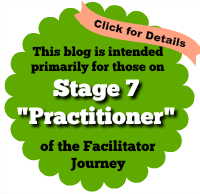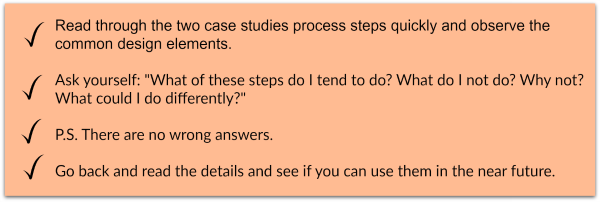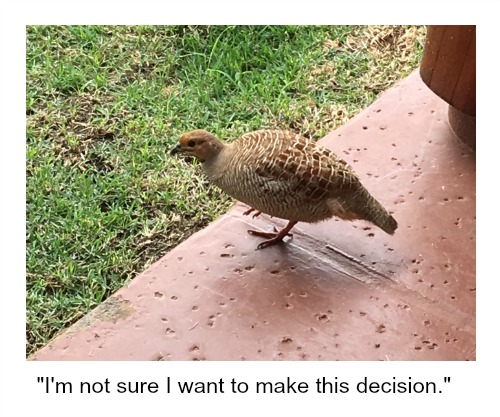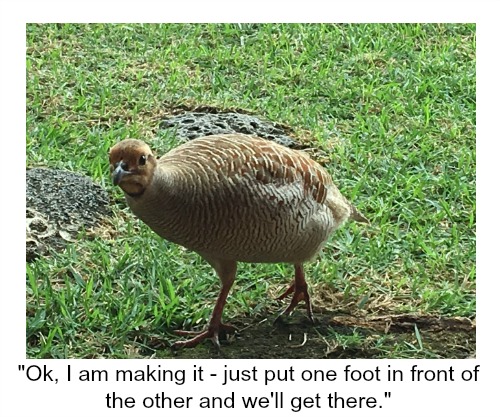How to Prioritize… When a Group Says EVERYTHING is Important

 I don’t know why but I never run out of blog topic ideas to write about when it comes to process facilitation. I just love thinking about all the scenarios in which facilitator tools and values can be applied. So this week, I had several related things happen which urged me to write about them. Several of those reminders were about groups who had too much to do and wanted to “take things off their plate”. For example, I just happened upon the agenda of the 12 year old job a few months ago, when I had a very similar job coming up. So I asked myself “What can I learn from the first job to help me do the second job?”
I don’t know why but I never run out of blog topic ideas to write about when it comes to process facilitation. I just love thinking about all the scenarios in which facilitator tools and values can be applied. So this week, I had several related things happen which urged me to write about them. Several of those reminders were about groups who had too much to do and wanted to “take things off their plate”. For example, I just happened upon the agenda of the 12 year old job a few months ago, when I had a very similar job coming up. So I asked myself “What can I learn from the first job to help me do the second job?”
Each group literally had too much to do. It was all really, REALLY important and sometimes felt like life and death if something did not get done (from their perspective). But the truth was, they did not have the resources to do it all. And, they were experiencing exhaustion and stress. How do you prioritize when everything is important?
In this blog, I will talk about the specific tools I used in two agenda designs to help the groups get through the prioritization process.* The end result was the groups felt confident, relieved and comfortable with what they prioritized as most important!


Case Study 1
What: A government organization with many Branches in the city that provided public service work. The work often served the poor. The staff of each Branch had recently experienced cut – backs, they felt worn out, over-whelmed with the amount of urgent work and many felt unable to be productive.
The agenda: The agenda looked like this. I explain my rational for each piece of the agenda in the “because” statement following each step of the process:
- Get to know your competencies activity using a card game. Each person had to barter or trade cards with other team members which did not fit them to obtain word descriptors that did fit them (Because they needed to be reminded of these skills and talents when it came to choosing what NOT to do versus what TO DO! It also got them up and moving and energized in a positive way. There were over 30 branches so they would benefit from getting to know each other more informally.)
- Interviews in pairs about the overarching departmental mission, vision and priorities. I gave them 3 open-ended questions to ask each other. Each got exactly the same amount of time to speak. (Because this gave them the big picture of what the entire department thought of as important at that moment in their history. They got to complain about it confidentially in pairs if they needed to do that. The pairing allowed them to do this without taking a lot of the entire group’s time on releasing negative emotions).
- Break
- Create a common vision for all Branches. (Because this was a process to unify their thinking.) They were all providing the same public service and could not unilaterally decide to stop a public program. They needed to build consensus on what they saw as a positive future of public services and programs. I used the ToP (Technology of Participation) visioning process. They then compared this Departmental vision with their own Branch visions.
- Start a baby conversation about priorities. (Because it helps to start small – we would come back to it at the end of the day but I find an iterative process sometimes makes the decision more “ palatable”).
- Lunch break followed by a fun relevant game (Because this gave them time to incubate what they had discussed in the morning – the decision about what to take “off their plate”, and to put them into a positive emotional state prior to making the hard decisions).
- Analysis of what activities must “stay” versus what could be ”dropped”. We created a large chart to build consensus on what had to stay versus things that might be downsized or simply not done (Because this is what the day’s objectives needed to get to!)
- Share best practices to better manage the workload. In small groups, they visited different tables set up with themes. They had pre-identified possible ways to better manage the work that had to be done (e.g., daily operations’ tasks; training; staff activities; leadership; facilities; programming; reporting, etc.). At these table groups, they shared ideas about what they could do as best practices to reduce the amount of stress they were feeling. (Because they were their own experts; some Branches had created effective ways to do reporting for example and each Branch leader got to learn others’ best practices in areas in which they were struggling).
- Break
- Synthesis of key priorities. Small groups put forth 2-3 recommendations on what could be done to better manage their workload. (Because ultimately, each Branch needed to decide what made most sense for them from the range of options. what one Branch did may not be applicable to another Branch but they at least had agreed on what was common to most Branches as areas that could be streamlined).
- Each Branch team chose 1-3 things they could do differently to manage the workload and committed out loud to the whole team on what they would do. Each person chose a buddy from another Branch to support them in this decision. (Because having people make a commitment out loud and be accountable to another team member increases the chances of change occurring).
- Celebration and appreciations (Because this was hard work and they needed courage to try things differently, to help them remember the energy of their colleagues to inspire them over the next few months as they made changes).

Case Study 2
What: A small non–profit who had spent a lot of time developing a comprehensive plan. Their board asked them to cut the plan back because it seemed too ambitious and was not, in their opinion, likely to get all done with the resources in place. The staff generally did not want to cut back because all the work seemed important.
Note – I do not add the rationale (i.e., “because” statement) because I think you will know why by now. But if you are not sure, feel free to ask!
The agenda:
- Appreciative Inquiry style check in. Including what gifts you bring to the organization and what you are proud of that has been accomplished over the last few years.
- Big picture review and acknowledging progress made. Very brief trends analysis of the field of this organization; a review of mission, vision and values; Progress check on where they have already started to make progress on the new plan.
- Break
- Visioning. Where can we make the biggest impact?
- Long lunch
- Decide on priorities. Help the group reach consensus on which of the biggest goals will make the biggest impact. Rank order the goals.
- Fun, celebratory activity
- What do we need to “take off our plate” to lighten our load and make the intended impact? This included a conversation on barriers to committing to the decision on what to take off their plate.
- Creating the preliminary, then final list of Keep/Maybes/Take Off list. What must we keep as activities in the priority goals? What is a maybe pile of “take off” items? What are easy “take off “ items? Build consensus on final new list using relevant self-identified criteria.
- Break
- Strategies to ensure continuity in the “take off our plate” areas. Develop general ways to handle the items not to be done by this group and specifically where relevant, identify other organizations and people who could take on these “lesser priority” items.
- Closing conversation. What do we feel glad, sad and mad about in terms of our prioritizing today?
- Celebration of decisions made. Using bubbly grape juice, celebrate the courage, audacity and wisdom shown today in specific ways to each other.

Your Assignment
- Identify the common elements. (Below in the resource list I give you my version of what were the common elements).
- What steps makes sense to you?
- Which do you do (or would you do)?
- What do you do (or would you do) differently? Why?
- What did I miss?
I would appreciate your feedback in case I have to do this type of job again!
Resource List
• My favorites includes tools for helping get a group to decisions are ICA’s ToP Focused Conversation Method in their Group Facilitation Methods course, Decision Criteria matrix, Sam Kaner’s Gradient’s of Agreement, and Dr. de Bono’s Six Thinking Hats. You will find those tools in the PDF modules for purchase below.
• IAF Handbook for Group Facilitation


• A blog that helps you also think about decision making criteria around running a business as a process facilitator: https://www.northstarfacilitators.com/2015/11/facilitator-economics-your-top-money-questions-answered/
Common elements I see in the two case studies:
Setting the big picture so they have a larger reference point; referring them to the existing mission, vision, and values as one of their decision making reference points; positive affirmation; building safety with each other; giving them lots of opportunities for iterative decision-making; using consensus-based decision-making tools; getting them to prioritize using relevant criteria; ensuring they were strategic about how to follow-through with decision-making; encouraging them to draw on the wisdom of the group to flesh out strategies; allowing both positive and negative feelings to surface; celebrating them throughout for courage and wisdom; lots of breaks; never used dot voting (which IMHO, can be disaffirming)!
*I have altered or generalized details to protect client confidentiality.
P.S. The banner photo is from the Big Island in Hawaii which is covered in lava rock and is an active lava flowing volcano! The bird photos are from the Big Island too. This one came to visit me as I was writing this blog!


Barbara is an excellent facilitator and trainer of those wishing to improve their knowledge, skills. and abilities! She provided the foundation on which I base my practice. Forever grateful!
Thanks for sharing, Barbara. I found this blog extremely helpful. You have given so many FAB ideas for a team event I am facilitating in the near future.
Wonderful David! curious which ideas you’ll use?